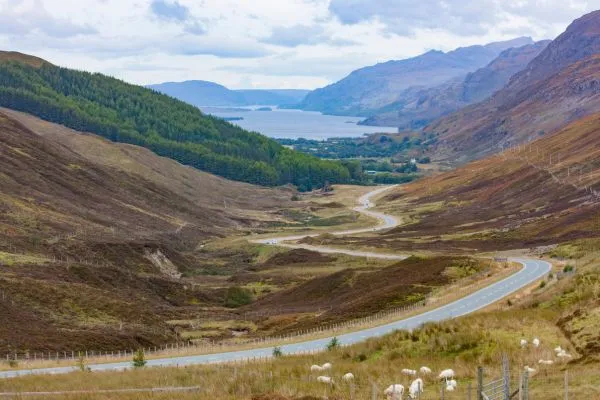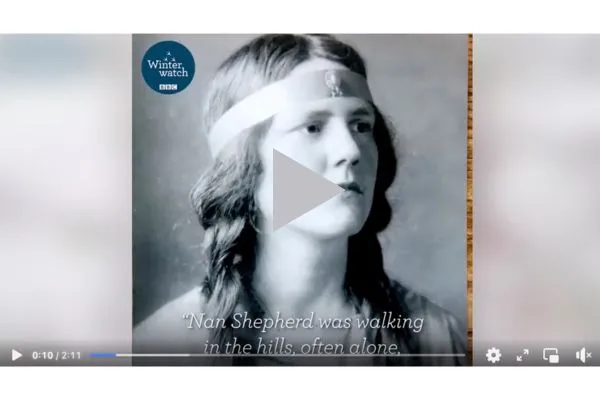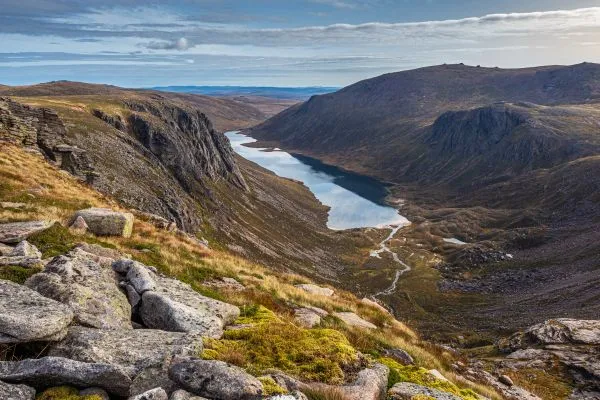Nan Shepherd left an indelible mark on literature and nature writing. We explore Shepherd’s enduring legacy, which lies in her profound connection with the Scottish landscape, particularly the Cairngorms.

Who was Nan Shepherd?
Nan Shepherd was a Scottish writer, poet, and mountaineer, best known for her influential contributions to nature writing.
Born in 1893 in Peterculter, near Aberdeen, she spent much of her life in the Scottish Highlands, particularly the Cairngorms, which served as a profound source of inspiration for her work.

Happiest outdoors from an early age, her passion began in childhood. A youth spent roaming the Deeside hills made her well accustomed to hill-walking. But to climb the snow-gilded, granite mass towering at summits of over 1,200m (3,935ft) to the west of her home seemed to her “a legendary task, which heroes, not men, accomplished. Certainly not children”.
Yet the Cairngorms haunted her and in June 1928, aged 35, Shepherd set foot on their ice-cold peaks for the first time. From there, she was hooked - at first, addicted to the tang of height, Shepherd scaled all six summits – some twice over.
Whenever her role as lecturer in English at Aberdeen Training College allowed, she escaped to the mountains, and continued to do so long after retirement. She died in 1981.
Nan Shepherd's The Living Mountain
Her best-known work, The Living Mountain, stands as a testament to her deep reverence for the mountains and remains a timeless celebration of the symbiotic relationship between nature and the human spirit.
Her writings beautifully capture the intricate interplay between the natural world and human experience, offering readers a contemplative and poetic exploration of the wilderness she cherished.

By exploring the Cairngorms recesses and discovering the mountain’s inside – going into rather than up it – she began to know its essence. And it was knowledge that Shepherd was after (although, as she admits in The Living Mountain, “one never quite knows the mountain, nor oneself in relation to it”).
Hiking the Cairngorms
Shepherd would hike for days, foraging for berries and drinking from burns. She swam naked in lochs, trod barefoot on heather and, believing that “no one can know the mountain completely who has not slept upon it”, regularly slept out from May to October. If she did shelter under a friend’s roof for the night, she would sleep near the door so she could prowl outside at all hours.
Tall, lithe, eschewing the trousers adopted by other female climbers from the 1920s onwards, Shepherd cut an elegant figure even ‘on the tramp’ as she called it. She walked with friends, fellow members of the Deeside Field Club and groups of students, who recall her lectures on “the sinfulness of dropping sweetie papers about the countryside”. She never married, but joined a couple on their honeymoon when she heard they were headed for her beloved hills. Often, she walked alone with no particular destination in mind, happy just to be with the mountain “as one visits a friend”.
Poetic prose
A distillation of her Cairngorms experiences, Shepherd wrote The Living Mountain towards the close of the Second World War, by which time she was already a well-established author of Scottish Modernist literature and poetry. Her novels The Quarry Wood, The Weatherhouse, A Pass in the Grampians and her poetry anthology In the Cairngorms had been published by 1934. Now considered a classic of mountain literature, The Living Mountain is a powerful, poetic piece of prose that has influenced contemporary authors such as Robert Macfarlane, who says the work remade his vision of the Cairngorms.
When was The Living Mountain published?
The Living Mountain was initially rejected for publication. More than 30 years passed before Shepherd retrieved the manuscript from a drawer, convinced the tale of her ‘traffic of love’ with a mountain was still valid. It was and remains so: the book finally appeared in 1977 and has recently been reprinted.
- Buy The Living Mountain from Waterstones or Amazon.
- For other titles by Nan Shepherd, including The Grampion Quartet and Wild Geese visit Waterstones or Amazon
Nan Shepherd Prize
Launched in 2019, the Nan Shepherd Prize is dedicated to discovering the future voices in nature writing, specifically offering an inclusive platform for emerging writers from underrepresented backgrounds.
Held every two years – it ran in 2023, so is due to accept submissions in 2025 – the coveted award includes a book deal with Canongate, providing the winner with editorial mentorship and a £10,000 advance.
A Beautiful and Vital Place by Alycia Pirmohamed, won the 2023 Nan Shepherd Prize
About the author
In 2014, Charlotte Peacock began researching Nan Shepherd’s life after reading The Living Mountain. Her biography of the author, Into the Mountain: A life of Nan Shepherd, is available on Waterstones and Amazon.
Find out more
To honour her legacy, The Royal Bank of Scotland featured Nan Shepherd on the Scottish £5 note. And, if you're inspired by her love of the Cairngorms, why not visit them? Our experts have compiled guides to the Cairngorms National Park, including the best walks in the best walks in the Cairngorms and mountain playground: the Cairngorms for kids.
Portrait image by kind permission of Erlend Clouston.
This feature contains affiliate links and we may receive a commission for purchases made. Please read our affiliates FAQ page to find out more.